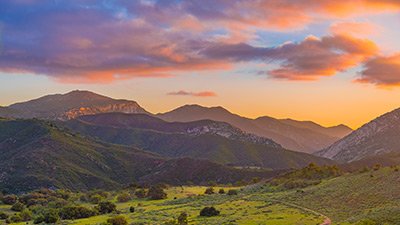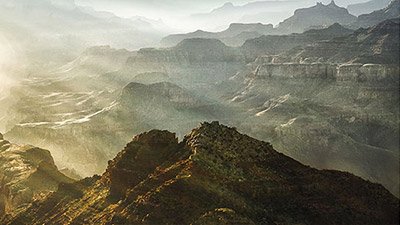Does Sand Prove Long Ages?
Dr. Andrew Snelling, AiG–U.S., gives a young earth creation explanation of the formation of beaches and other sands.
I am a strong "young earth" creation scientist who has been unable to answer questions from old earth Christians or find technical help to respond to the following: "beach sand demonstrates that the earth is at least millions of years because its origin is lava, coral, and other metamorphic rock, and sedimentary rock is formed from the erosion and reconsolidation of sands that had already been formed."
Please help. I would greatly appreciate a young earth creation explanation of the formation of beaches and other sands. I can only say that God created them that way; however, why then did he make different kinds of sand, such as the black Hawaiian beach sands and other special sands that appear to have had local sources.
Whenever anyone, whether Christian or not, makes a claim that some aspect or process of the earth “demonstrates” that the earth is at least millions of years old, we should immediately challenge them as to what assumptions they are using to make such a judgment. After all, no one was there in the past to see that aspect or process in operation, so how could anyone possibly know that the rate of that aspect or process occurred in the past at the same rate it is occurring today? We simply cannot know!
It is instead an assumption that is implicit in such a statement, for example, that beach sand demonstrates that the earth is at least millions of years old. That statement assumes that erosion to produce the sand on beaches has always occurred at the rate that it is observed to occur today—and most of the time erosion does occur slowly and gradually today. So most people have been indoctrinated with the idea that because geological processes are slow and gradual today, then they have always been that way in the past—and so that to erode all the sand that is now on the beaches “must have” taken millions of years!
For the Christian, however, such an assumption is ruled out by the Scriptures themselves, and God’s Word should be—and must be—our absolute authority. Sadly, many Christians try to add contradictory fallible human reasoning to God’s infallible Word instead of accepting God as the absolute authority. God has clearly told us everything we need to know, including what happened in the past, how long it took Him to create everything in the universe, and how long ago that was.
The reality is that God’s Word plainly teaches us that geological processes have not always been slow and gradual, as the rates we observe today are. In Genesis 6-9 we read of a global watery catastrophe that cataclysmically convulsed the earth and totally reshaped it. The text in Genesis 7 specifically says that all the fountains of the great deep were broken up, and the windows of heaven were opened, so that it rained on the earth torrentially all around the globe for 40 days and 40 nights. As a consequence, all the high hills and all the mountains were covered. It was a global Flood. Since we don’t see things like global floods operating today—with the earth catastrophically convulsing everywhere due to the earth’s crust being ripped apart, steam and red hot volcanic materials being blasted everywhere, and torrential rainfall—the present is not the key to the past. In fact, the Scriptures are clearly teaching, rather, that the past is the key to understanding the present. In other words, it was because of what happened during the Flood in Noah’s Day that the earth is the way it is today.
Furthermore, the Apostle Peter in 2 Peter 3:3–7 warns us that in the last days there will come scoffers who will deliberately reject the evidence that God created the world by His word of command, and that the world that then existed was utterly destroyed by a watery cataclysm, and that the world we now live in is totally different from the world before that Flood. And Peter also prophesied there that the reasoning of these skeptics and scoffers would be that “all things continue as they were from the beginning of the creation.” In other words, they will claim that geological processes have always occurred at the rate at which we see them occurring today. Such reasoning is a deliberate rejection of God’s Word concerning this cataclysmic Flood.
All modern geology is built on this assumption of geological processes always occurring at the same slow and gradual rates we observe today, and is known as uniformitarianism. It is a belief about the past that cannot be observed, because we can’t go back to the past. All we have is the evidence in the present of sand on beaches, and any explanation as to how that sand got there and the rate at which it accumulated is based on assumptions about how to interpret the evidence of slow and gradual erosion we see today. In other words, the conclusion you come to depends on the mental glasses you are wearing, such mental glasses being the lens of interpretation through which one interprets the world one sees. This is what we mean by one's worldview. In any case, there is observational evidence in the present that erosion rates aren’t always slow and gradual, and that sand can be eroded rapidly and accumulate rapidly to form beaches.
In the late spring and early summer of 1983, there was snowfall in the high country of the upper Colorado River basin causing excessive runoff to pour into Lake Powell behind Glen Canyon Dam in northern Arizona. In order to avoid the dam wall overflowing, engineers decided to allow greater than normal outflows through the spillway tunnel in an effort to drain away the excess water. On June 28, 1983, they increased the flow to 32,000 cubic feet per second out through the 40-foot-diameter spillway tunnel. However, within a matter of seconds the flow of water in the spillway tunnel changed abruptly from smooth to turbulent, as large pieces of concrete and bedrock were hurled from the discharge end of the tunnel. Furthermore, the water exiting the tunnel became red (the color of the surrounding sandstone), and noticeable ground vibrations (earthquakes) were felt. The spillway tunnel was immediately closed, so that damage could be evaluated.
A survey team discovered extensive damage in the spillway tunnel due to the process called cavitation. The water was moving so swiftly and in such a large volume that vacuum bubbles were produced in the water that imploded in an explosive-like process that delivered hammer blows to the concrete lining of the tunnel at pressures estimated to be as much as 440,000 lbs per square inch! No wonder the three-foot-thick, steel-reinforced concrete lining of the tunnel had been gouged out in several huge pits. At an elbow where the tunnel levels out, a hole 32 feet deep, 150 feet long, and 40 feet wide had been cut through the lining into the red sandstone bedrock beneath. That enormous hole required 63,000 cubic feet of concrete to fill! The speed of this erosion had been very rapid, most of the erosion occurring during the few seconds when the red color of water appeared and ground vibrations were generated. It was estimated that the cavitation was pulverizing the concrete, steel and sandstone at a rate in excess of 1,000 cubic feet per second during the peak period of this erosion.
This event demonstrates what evolutionist Derek Ager, the former professor of geology at the University College in Swansea, Wales, maintained in his ground-breaking book The New Catastrophism, published by the Cambridge University Press in 1993. The subtitle of that book was “The importance of the rare event in geological history.” Ager maintained, and with much good evidence, that most geologic work was done during very brief catastrophic episodes. In other words, the sand in any sandstone layer would have been produced by a catastrophic episode of erosion such as was observed in the spillway tunnel of the Glen Canyon Dam in 1983.
To substantiate this claim and make it relevant to the issue of the formation of beaches and beach sands, we focus on something that happened off the coast of Iceland. In 1963 volcanic eruptions on the seafloor adjacent to Iceland produced a new island, which was called Surtsey. Amazingly, within a few months of the volcanic activity ceasing in 1964, erosion by the ocean produced a coastline with beaches covered in sand. In fact, within a year or two the island had become vegetated and populated with insects and animals. It didn’t take thousands of years for either the beaches to form or the island to be populated. Yet anyone who hadn’t observed what actually happened, but who instead arrived to see the island, may well have concluded, using the assumption of slow and gradual processes over millions of years, that the beaches on the island looked as though the island and the beaches were millions of years old! Instead, it was all observed to happen within months.
It is relevant, in closing, to refer back to the cataclysmic Flood event the earth experienced as recorded by God in His Word. Because we are told in Genesis 7 that all the high hills and the mountains were covered by water (i.e., the earth was totally inundated as confirmed by the Apostle Peter in 2 Peter 3 where he used the Greek word meaning “overflowed” in English), the Flood waters had to drain away to have the present exposed land surface with its topography. Psalm 104 refers to the valleys sinking and the mountains rising at the end of the Flood, so that the Flood waters drained off to the boundaries that God then set, and which would never be crossed again. Indeed, God promised Noah in Genesis 9 that He would never send another event like the Flood again. We have certainly had lots of local floods since the time of Noah, so if Noah’s Flood was only local, then God has broken His promise. No, God’s Word is clear that it was a global Flood in which the entire earth was overflowed by water.
My point is that as the Flood waters drained off the earth’s surface, massive erosion would have occurred at a catastrophic scale and rate. There is abundant evidence (on which most everyone agrees) that many of the earth’s high mountains and plateaus today were uplifted only relatively recently. That would have been at the end of the Flood, when the new ocean basins would have also been deepened so as to collect the Flood waters draining off the uplifting continental surfaces. That’s why there are such great thicknesses of sediments on the continental shelves surrounding the continents, because as the Flood waters drained off they eroded and dumped those sediments offshore. Then and since the Flood, nearshore ocean currents would have swept sand onto the coastlines to form beaches.
The water flows would have been similar to what was witnessed at the Glen Canyon Dam, so the rapid erosion of rocks would have produced huge volumes of sand, which dumped offshore and on the coastline to form the sandy beaches and the immediate sandy offshore areas. Since this would have happened during the closing months and weeks of the Flood year and in the years thereafter, the sand on the beaches and the formation of the beaches didn’t take millions of years. And of course, the waters eroded the local rocks and materials that then accumulated as beach sands locally, which explains the black Hawaiian beach sands, for example.
So in conclusion, the interpretation of the evidence we see of sandy beaches today and how they formed depends on your starting assumptions. If it is assumed that only slow and gradual erosion processes seen today were all that were capable of eroding the sand and forming the beaches, then it would have taken millions of years. However, both observational evidence in the present and the authoritative testimony of God’s Word tell us that geological processes have not always been occurring at the same rate, but that there have been catastrophes in the past, particularly a global catastrophe that the Bible speaks of: Noah’s Flood. When we thus view the evidence through biblical glasses, basing our interpretation on the authority of God’s Word, then we can conclude that beach sand and beaches do not take millions of years to form.
I trust you can now confidently answer the questions from your old earth Christian friends. As Christians we should not be ashamed of God’s Word, but use it as our absolute authority in every area of life, including our scientific investigations and our understanding of the world around us and how it got to be the way it is today.
Recommended Resources

Answers in Genesis is an apologetics ministry, dedicated to helping Christians defend their faith and proclaim the good news of Jesus Christ.
- Customer Service 800.778.3390
- Available Monday–Friday | 9 AM–5 PM ET
- © 2025 Answers in Genesis






